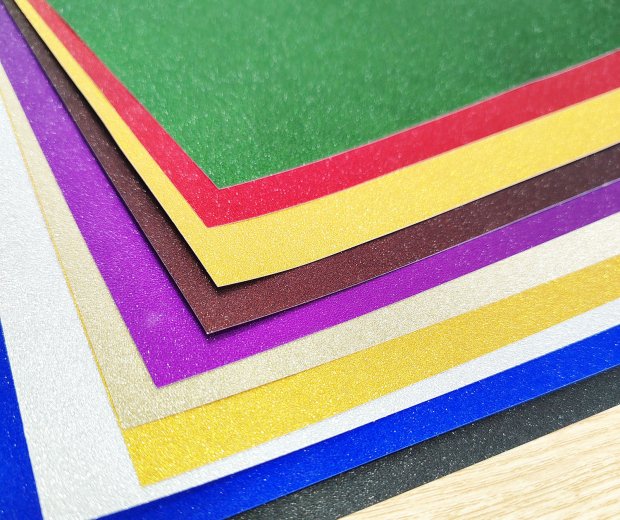Glitter paper is a fun and decorative option for bookbinding, especially for covers, endpapers, or accent elements. However, it requires some special handling due to its texture and composition.
Types of Glitter Paper
Glitter Cardstock – Thick (80-120 lb), durable, and ideal for hardcover or paperback covers.
Glitter Vellum – Semi-transparent, good for overlays or decorative inserts.
Self-Adhesive Glitter Paper – Easier to apply but may not be as durable for long-term use.
Foil-Glitter Paper – Metallic finish with glitter, adding extra shine.
Best Uses in Bookbinding
✔ Book Covers (if reinforced with book cloth or laminate)
✔ Spine Accents (for decorative touches)
✔ Endpapers (if using a lighter-weight glitter paper)
✔ Bookmarks & Inserts (for added sparkle)
Challenges & Solutions
⚠ Shedding Glitter – Some cheaper glitter papers flake. Fix: Seal with mod podge or clear laminate.
⚠ Thickness & Flexibility – Glitter cardstock can be stiff. Fix: Score before folding for clean creases.
⚠ Adhesion Issues – Glitter texture makes glue tricky. Fix: Use PVA glue + weights or double-sided tape.
⚠ Cutting Difficulty – Glitter paper can dull blades. Fix: Use a craft knife or rotary cutter.
Alternative to Glitter Paper
If shedding is a concern, consider:
Foil-Stamped Paper (glitter effect without loose flakes)
Holographic Paper (shimmery but smoother)
Glitter Vinyl (adhesive-backed, more durable)








